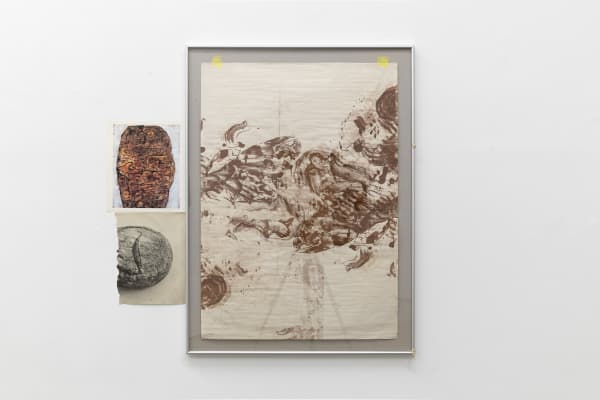Kaput / 갈래머리: vicky kim
-
Vicky Kim Kaput / 갈래머리
For her second solo exhibition with Gallery Chosun, London-based Vicky Kim (김성은) presents a series of new print-based works under the dual titles ‘Kaput’, ‘갈래머리’. A meditation on labour, image production and artistic expression, Kim considers the representation of the (female) body as a complex interplay of industrial culture at large, and the private, subjective worlds that feed its iconography.
Incorporating elements of sculpture, installation, drawing, and printmaking, Kim’s work often finds form around a physical proposition; an action or gesture that gives rise to an image challenging the comfortable relation between our bodily and psychical selves. Having spent her formative years studying dance, Kim explores the fine line between the body as apparatus and object: between the desire to participate and perform on the one hand, and a vulnerability to commodification on the other, as individual autonomy comes up against the suffocating effects of capital.
The exhibition is dominated by four large-scale wallpaper works, each with its own ‘pattern’ of gestural sponge marks. Ranging from the wistful and laconic to fervent and aggressive, if resolutely indecipherable, these marks are open to interpretation, their repetitive splatters, stains, scratches, and smudges pointing towards the drudgery and toil of domestic labour, as well as the space of the body and its residues. First executed in ink on acetate, before being transferred to silkscreen and printed irregularly in shades of brown acrylic, no two rolls of paper are the same, and what might at first glance appear a pattern, lines the walls of the gallery in the guise of ornamentation alone.
Accompanying the wallpaper are images of women, torn from fashion magazines, and framed in groups running along the top of each work. Either making eye contact, or looking away in a moment of interiority, these speechless/mute figures exhibit some commonality of expression, pose, or gaze; their similitude and repetition (echoing that of the printed paper behind), insistent - less in defiance of the context from which they have been appropriated, than on their newfound presence - one that makes us only more conscious of our own. At the same time, seen in part, these are partial bodies: heads, faces, torsos, limbs - severed from their corporal whole, first by the frame of the camera and then by the page - a violence (re)enacted on the image by the tear, and the scar it leaves behind.
It is these images that inform the two titles of the exhibition: ‘Kaput’ (meaning broken and useless), a Germanic derivation of ’caput’, the Latin for head, and the root of words such as capitulate, decapitate, and capitalism; and ‘갈래머리’, literally hair braided in two - a traditional Korean word for the pigtails that used to be worn by young female students, but which here alludes to the splitting of the head, and the body, in the mill of representation.
These themes continue to reverberate through the rest of the exhibition, made up of various discrete works on paper: a series of silkscreens on newsprint, produced as a by-product of the wallpaper, and a group of silkscreened finger “paintings”, or doodles, that substitute the sponge for the primary ’tool’ of the body itself - in this case the parodic finger of the ‘creator’, at once infantile and scatological.
Indeed, any appearance of proximity here, to the body of the artist, or any of the bodies inhabiting these works, is illusory; their presence ungraspable. The closer we get to the finger, moving back and forth across the surface of the image, the further removed is the hand at work, and the closer the sleight.
-
-







